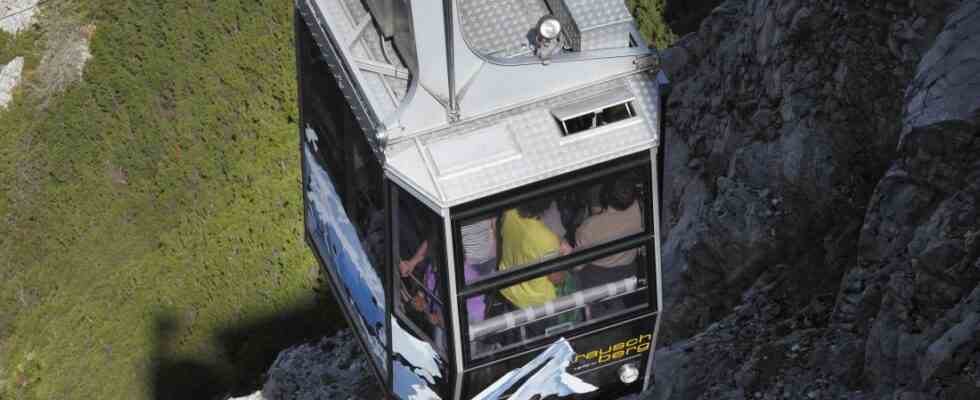It was a farewell with melancholy and brass band music: Last Sunday, the people of Ruhpolding climbed into one of the black and gray gondolas for the last time to be carried up the 1,645 meter high Rauschberg. A day later, the operating license for the almost 70-year-old Rauschbergbahn expired, but of course it shouldn’t stop there. A new cable car has been in the planning for a long time, instead of 120 as before, it should then bring up to 450 passengers per hour to the Rauschberg. It will probably need at least 25 million euros for the new building, and this in turn requires investors in Ruhpolding, who have not found each other for a long time. There is now a preliminary contract, and when everything is fixed, then the Free State will certainly be there again with several million. Because the state government regards its cable car funding as a successful project, which it has just had confirmed in a recent evaluation. Conservationists usually have a different opinion.
“An attractive, modern infrastructure significantly enhances the Bavarian tourism regions.” Economics Minister Hubert Aiwanger (FW) draws this conclusion from the study that his company ordered from the tourism consultants of the dwif-Consulting office and has now published. The three authors of the study looked at the 42 projects that were completed between the start of the funding program in 2009 and 2020. All together they cost 199 million euros, about a quarter of which came from the Free State. According to the Ministry of Economic Affairs, four more important projects have been added from 2020 to date, so that the Free State has already distributed 91.1 million euros in funding for a total of 46 projects with an investment total of 323.5 million euros.
The authors, who, according to their own account, were primarily in contact with the recipients of the subsidy and with representatives of the Ministry of Economic Affairs and various district governments, come to the conclusion that 70 percent of all funded cable car projects would not have been possible at all without money from the state. They therefore see the funding as an “investment trigger” which, in addition to the cable car projects, which are subsidized at 35 percent of the costs, has resulted in further investments. The result: more comfort, more accessibility, more satisfaction, more attractive tourism, more jobs and of course more guests. At the same time, the municipalities have often withdrawn in favor of private companies and have thus been relieved financially. According to the final report, 94 percent of those funded would like to take money from the state again.
However, the fact that there is more and more of everything in the mountains thanks to state subsidies is met with sharp criticism from environmental groups. The sensitive ecosystems and quiet areas in the mountains were already coming under increasing pressure. A quantitative growth in tourism, as is associated with the regular increases in capacity for cable car renewals, “can no longer be a goal for the Bavarian Alps,” said Richard Mergner, the state chairman of the Federal Nature Conservation Agency. Local citizens’ initiatives such as the “Rettet die Kampenwand” group also hold the cable car funding jointly responsible for undesirable developments – in this specific case for the planned and already approved expansion of the cable car to the Kampenwand, which is already overcrowded, together with a further increase in car traffic in the valley.
Investments in winter operations are not planned for the Kampenwandbahn
The Kampenwandbahn represents an exception, because investments in winter operations, such as new snow cannons and storage ponds, are not planned here. As a rule, however, this is also supported by the state. Numerous nature conservation associations such as the BN, the state association for bird protection and also the German Alpine Association are currently fighting against this with a catalog of demands to the parties in the state parliament. In this way, they also want to achieve a public debate about changes to the funding program.
That would expire at the end of the year, but Aiwanger is keen to extend it. In connection with the cable car study, his ministry particularly emphasizes that the funding means that money flows into year-round operation. So you only subsidize gondolas and chairlifts, but no new drag lifts. The move away from the tow lifts has “only made summer use possible in many places”. The Rosenheim CSU member of parliament Klaus Stöttner, who is also President of the Upper Bavaria-Munich Tourism Association and counts himself among the inventors of cable car funding, appreciates this. With a view to the winter season, he is particularly pleased “that winter sports are possible right on our doorstep with our new cable cars. Long journey times are saved and long-distance traffic is reduced, which makes winter sports more ecologically compatible.”

